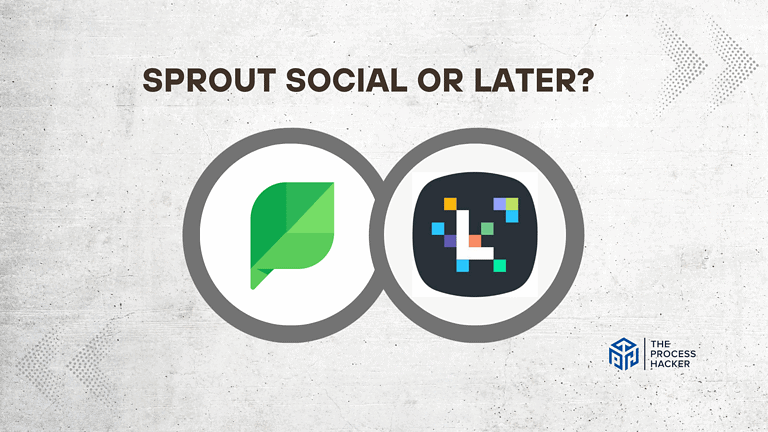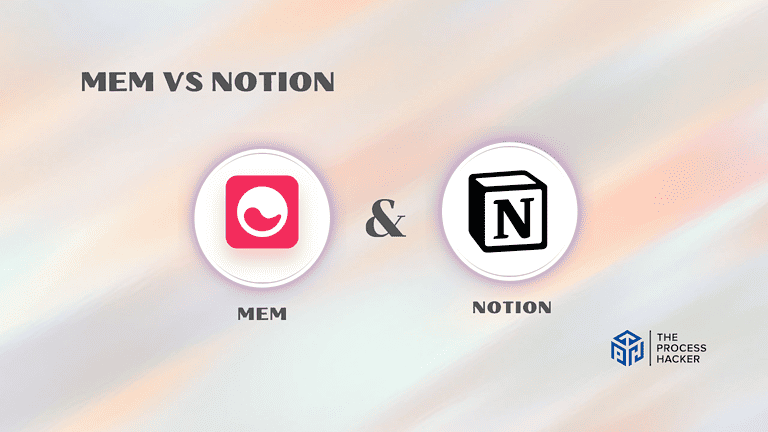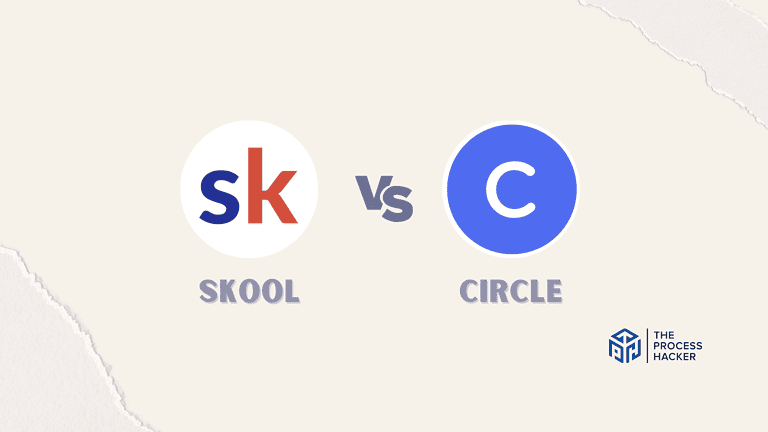Process: How Discipline and Consistency Will Set You and Your Business Free | Summary
In their book, Process!: How Discipline and Consistency Will Set You and Your Business Free, Mike Paton and Lisa González help you bring a process-oriented perspective to your business. And so they show you how to identify your core processes, document such they are correct and ensure that everyone is following them in your organization.
As a result, you will feel at ease, and your company will be more consistent, scalable, manageable, and profitable.
The book, Process, is part of the Traction library, or the books that document the Entrepreneurial Operating System (EOS). Gino Wickman created EOS to help leaders systemize their companies by strengthening the Six Key Components to grow and scale. You can read more about EOS in Gino Wickman’s Traction (book summary).
The Six Key Components of EOS are Vision, People, Data, Issues, Process, and Traction. In addition, this book provides a deep dive into specifically strengthening the Process Component of your business while improving your ability for big-picture thinking, innovation, and growth.
Buy Process on Amazon

Process by Mike Paton and Lisa González
How Discipline and Consistency Will Set You and Your Business Free
Download the Free PDF Book Summary For Process
Section I: Commit
In Section I of Process, Mike Paton and Lisa González motivate you to take on the issues, challenges, and lost opportunities caused by a lack of focus and entrepreneurial discipline for the process.
Chapter 1: The Right Mindset
In Chapter 1 of Process, Mike Paton and Lisa González explore how entrepreneurs and business leaders need to change their mindset to value processes. To get full commitment, they explore the three myths or faulty beliefs that business leaders have regarding processes:
- Process is Not in My Nature: Many find doing the same thing repeatedly unbearable, but typically entrepreneurs figure out what works best over time and tend to repeat it.
- Process Takes Too Much Time: Many overestimate the time needed to improve their company’s processes while underestimating the time lost by not having core processes.
- Process Destroys Freedom: Many believe that processes will result in inflexible bureaucracy, which results in a lack of creativity, innovation, and freedom.
The Power of Belief
You must reject these myths and overcome your anti-process bias, as processes are inherent in human nature. Further, having a solid Process Component will result in time savings in the future while creating freedom for you and your people.
Chapter 2: Why Is Process Important?
In Chapter 2 of Process, Mike Paton and Lisa González discuss the benefits of having a strong process component and the drawbacks of a weak process culture. Process is defined as follows:
Process – “a set of actions or operations that achieves the desired result”
What Is a Strong Process Component?
Before diving into the Process Component, the authors summarize EOS. There are Six Key Components: Vision, People, Data, Issues, People, and Traction. You can read more about EOS in Gino Wickman’s Traction (book summary).
Specifically, the Process Component requires establishing a set of core processes that are “documented, simplified, and followed by all.” In The E-Myth Revisited (book summary), Michael E. Gerber discusses the essence of process in the concept of the Franchise Prototype:
Franchise Prototype – “a proprietary way of doing business that successfully and preferentially differentiates every extraordinary business from every one of its competitors”
The Benefits
Therefore, by establishing a strong Process Component, you will build a blueprint for consistent execution and improvement, which will yield the following benefits as you will:
- Grow faster and more sustainably as you generate more leads and close more sales while investing less in poor salespeople or marketing activities.
- Attract and keep better talent as you strengthen your People processes to recruit, interview, hire, onboard, and train great employees for your business.
- Engage everyone in a culture of excellence as processes provide a clear baseline for actions and results while encouraging people to perform at their best.
- Have happier customers as process establishes realistic product expectations, delivers consistently high-quality products, and gathers feedback to improve products.
- Have more time as the consistent right actions result in more time for everyone. Further, new employees can use documented processes to get up to speed faster.
- Get better at resolving issues, as process will help you quickly and accurately determine the root causes of problems and troubleshoot them to improve results.
- Make more money as robust processes produce consistent, reliable results, which results in more profit and will give leaders time to work “on” the business.
- Have a more valuable company as the business’s value increases when profits grow. Note that your business is more valuable when it relies on processes, not people.
- Live a better life as core processes support the founder stepping away from the day-to-day operations. For more, check out The EOS Life (book summary) by Gino Wickman.
The Costs
In contrast, a weak Process Component can be troubling for an organization as it has the following drawbacks such that your business:
- Will struggle to find and keep great people who want to work for companies that have a vision, provide expectations, and provides the processes to get the job done.
- Will stop growing as lacking processes yield inconsistent execution and poor growth.
- May fall behind or become obsolete as you must constantly review and update your processes, as the world can change around you and put you out of business.
Section II: Learn
In Section II of Process, Mike Paton and Lisa González provide the 3-Step Process Documenter and FBA Checklist to teach you how to document, simply, and get your core process followed by everyone in your organization.
Chapter 3: Own It
In Chapter 3 of Process, Mike Paton and Lisa González show why it is essential for the leadership team to own process documentation within the organization. It may seem that front-line employees are best for documenting your processes, but there are three reasons why they should not do so:
- They may not love the idea, as competitive employees may not fully commit to the project, at the risk of losing their job.
- They may struggle with the assignment as top performers find it difficult to systematize their work, as consistency seems easy to them.
- Their time will be better spent elsewhere as top performers would rather do work they enjoy and drive results.
Thus, you will probably encounter resistance from your front-line employees, so be willing to listen, learn, and learn in line with your company’s culture of self discipline. Lastly, assign someone on your leadership to own the process documentation effort.
Chapter 4: The 3-Step Process Documenter
In Chapter 4 of Process, Mike Paton and Lisa González show you how to identify, document, and package your core processes to get them to be followed by all. The 3-Step Process Documenter helps you determine the significant steps for a process with the who, what, when, where, and how of each step.
Step 1: Identify Your Handful of Core Processes
First, the leadership team should spend about an hour to identify and agree on a handful of core processes for your company:
- Remind everyone to use an 80/20 approach to focus on the five to twelve essential core processes despite all the things that may go on in the company.
- Start with a sample list of processes such as HR, marketing, sales, account management, operations (manufacturing, storage, delivery, etc.), accounting, and operating system.
- Spend five minutes for each member to brainstorm their own list of core processes. This allows everyone to gather their thoughts and contribute diverse ideas.
- Compile the ideas on the whiteboard. Work through each process idea and keep, kill, or combine until you have your handful of core processes.
- Finally, name each core process appropriately. These named processes form the table of contents for your company’s core process manual, drive, or library.
Pro Tips: Completing Step 1:
- What’s the difference between a core process and _____? Avoid worrying about naming and focus on your company’s five to twelve most essential, repeatable processes.
- We have way more than five to twelve core processes. Have the team embrace the high-level, 80/20 approach to agree on the handful of core processes.
- Ready, Aim, Aim, Aim, Aim… “Perfection is the enemy of progress,” so encourage the leadership team to put their best effort forward and make progress.
- What’s the difference between a core process and a Proven Process?
- Core Process – a vital system to a company’s operations to get desired results
- Proven Process – shows the client’s experience when working with your company
Step 2: Document and Simplify Each Core Process
Next, the leadership team should document and simplify the core processes as follows:
- Create a plan regarding the specific format of the core processes.
- Prioritize and schedule the development of each process with due dates (typically 90 days per 1-3 processes).
- Decide upon an owner for each process from the leadership team member (1-3 processes per person).
- Observe each core process as it is performed today and ask questions for understanding (each leadership team member working on one process at a time).
- What is the specific objective of this process?
- What’s the first step in the process (and the last)?
- Are we consistently getting the results we want now?
- What are the keys to success?
- What causes problems?
- Outline and document the core process using the 80/20 rule and a linear or chronological approach. The significant steps should be supported by a few sub-points that define the who, what, where, when, and how of that core process.
- Evaluate the core process and look for ways to simplify it to be about 1-5 pages.
- Review and approve each core process with full agreement from the leadership team.
Pro Tips: Completing Step 2:
- Use an EOS Tool called “Getting What You Want” to clearly determine the desired result at the end of the core process.
- Get Leadership Team Review and Approval to ensure the process is correct, align everyone on the same page, especially the visionary and integrator, and save time in the discussion.
Step 3: Package So That They are Easy to Find and Use
Meet with the leadership package the core processes as follows:
- Discuss the who, what, when, where, and how for each process to determine the right format, medium, or format for the packaging.
- Gather, organize, package, or store them into a binder, online folder, or other accessible, easy-to-find package.
- Name the package of core processes.
- Make them easy for employees to find and reference for their work.
Download the Free PDF Book Summary For Process
Chapter 5: The FBA Checklist
In Chapter 5 of Process, Mike Paton and Lisa González show you how to get your core processes followed by all (FBA). They provide the FBA Checklist of Train, Measure, Manage, and Update to ensure that a cultural change occurs, and processes are used by everyone.
Train
Train everyone who performs one or more steps in a core process:
- Pick the training method (classroom, one-on-one, virtual, etc.) for your team’s needs.
- Encourage active participation and discussion with questions, concerns, and feedback.
- Verify that team members understand and commit to their processes.
- Train and repeat yourself often as needed by your team.
Measure
Measure performance to ensure people are doing the right things. First, set SMART goals. Next, decide how to best gather and report the data with who is responsible. Last, decide on the type of measurement:
- Compliance: Is the responsible person performing the process correctly?
- Frequency: Is the process repeated often enough to get the desired results?
- Outcome: Is the process achieving the desired results?
Manage
Manage your people and processes in a way that drives real accountability. So what does LMA mean in EOS? In EOS, LMA means “Leadership, Management, and Accountability.”
- Give clear direction to help your people understand why processes are essential.
- Provide the necessary tools to help team members change their behavior.
- Communicate clearly with reasonable expectations and provide constructive feedback.
- Reward good behavior and recognize great results.
Update
Update each process annually to stay relevant and promote continuous improvement:
- Engage the relevant employees for a given core process.
- Streamline, automate, and simplify the core process that needs updating.
- Train everyone that performs one or more of the updated core processes.
- Modify the way you Measure and Manage as necessary due to the changes.
Section III: Act
In Section III of Process, Mike Paton and Lisa González give you an action plan, help you overcome challenges, and provide templates and resources.
Chapter 6: Your Action Plan
In Chapter 6 of Process, Mike Paton and Lisa González encourage you to take action by
- Committing to taking action on your company’s Process Component.
- Completing the 3-Step Process Documenter by identifying, documenting, and packaging your company’s core processes over about 12 months.
- Completing the FBA Checklist by training, measuring, managing, and updating your core processes, so they are followed by all.
The authors provide the “Process! Process” with workflow visuals and step-by-step checklists to strengthen your organization’s Process Component. Remember, as the market changes, your organization, its processes, and your people must evolve.
Chapter 7: Overcoming Challenges
No matter how well you are at execution, you will probably face obstacles in implementing your core processes. In Chapter 7 of Process, Mike Paton and Lisa González list the most common challenges for process implementation and how you can overcome them:
- Lack of Passion: When you lack passion or motivation, fully commit, trust the process, and build momentum by documenting one process at a time.
- Lack of Expertise: The given process method does not require expertise. However, you can solve this challenge by developing the knowledge and skills of your current team, hiring someone with relevant experience, or partnering with a process firm.
- Love of Complexity or Perfection: Focus on making progress using the 80/20 rule to get your core processes done and then improve and update them over time.
- Overreliance on Technology: Get your core process identified, documented, and followed by all. Then, implement technology to improve your results.
- Lack of Leadership: Exert strong leadership by owning the initiative, helping everyone understand the why behind it, and keeping everyone engaged in the process.
- No or Poor Training: Documentation is insufficient, as training is required to create new work habits and achieve consistent results.
- No or Poor Measurement: Training is backed up by measuring either compliance, frequency, or outcomes to ensure that your process is working consistently.
- Avoidance of Accountability: “The success of any organization is directly proportional to the accountability of its people.” Thus, accountability is critical to the process culture.
- “Kind of” Syndrome: “Kind of” or “sort of” doing the work does not produce results, so ensure that processes have been simplified and clarified such that things get done.
Chapter 8: Templates and Resources
In Chapter 8 of Process, Mike Paton and Lisa González provide templates and resources to help you take action on your Process Component. They conclude with a checklist indicating your strength in the Process Component.
Download the Free PDF Book Summary For Process
Next Steps: Get a Copy of Process
In their book, Process!: How Discipline and Consistency Will Set You and Your Business Free, successful entrepreneurs Mike Paton and Lisa González show you how to be process-oriented in your business. The book helps you identify your core processes, document them, and make sure that they are followed by all in your organization.
I hope this blog post has inspired you to get your copy of Process by Mike Paton and Lisa González or check out the rest of the EOS library:
- Traction (book summary): Helps the self-disciplined entrepreneur implement EOS and the Six Key Components to gain traction and grow their businesses.
- Get a Grip: How to Get Everything You Want From Your Entrepreneurial Business (book summary): Tells a fictional business fable about an entrepreneurial company hitting the ceiling. In response, the company’s leadership implements EOS for success.
- Rocket Fuel (book summary): Provides a guide for the integral relationship between a Visionary and an Integrator.
- How to Be a Great Boss (book summary): Helps leaders and managers at all levels of an organization get the most from their people.
- What the Heck is EOS? (book summary): Provide a complete and simplified guide on the EOS process and tools for your employees.
- The EOS Life: How to Live Your Ideal Entrepreneurial Life (pdf book summary): Live your ideal life “doing what you love, with people you love, making a huge difference, being compensated appropriately, with time for other passions.”
- Entrepreneurial Leap (book summary): Helps you determine if you are an Entrepreneur-in-the-making, take the Entrepreneurial Leap, and become an entrepreneur.







